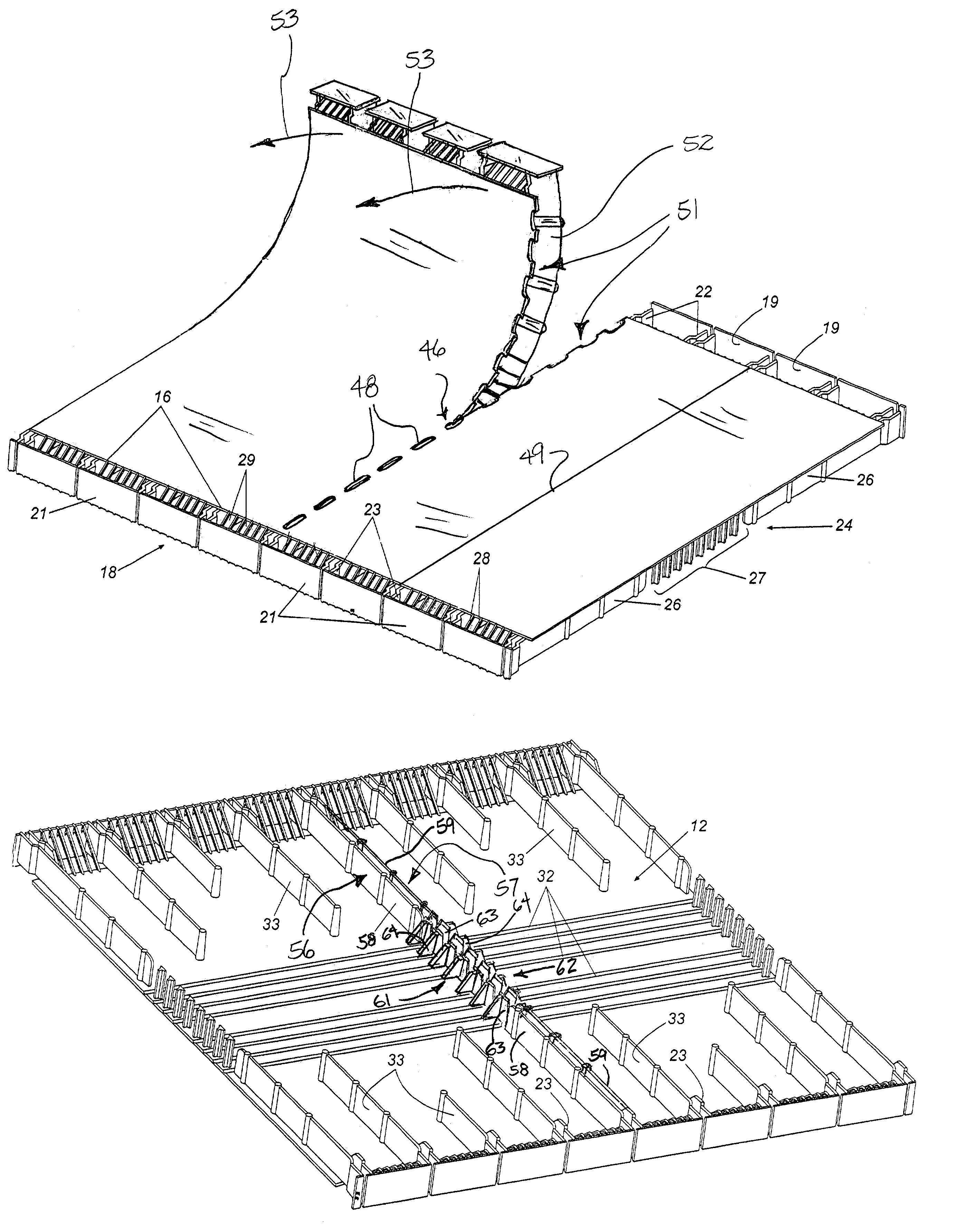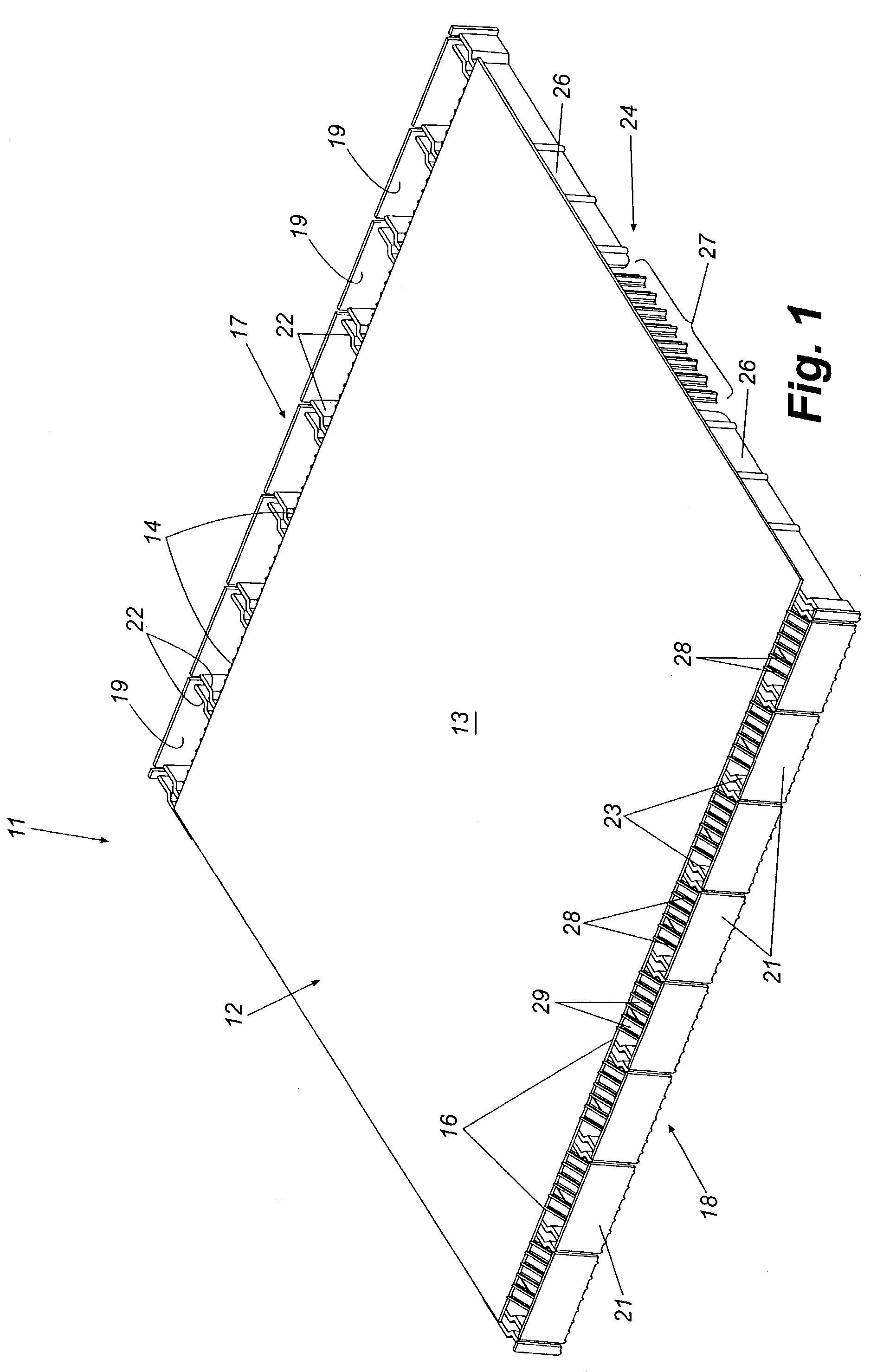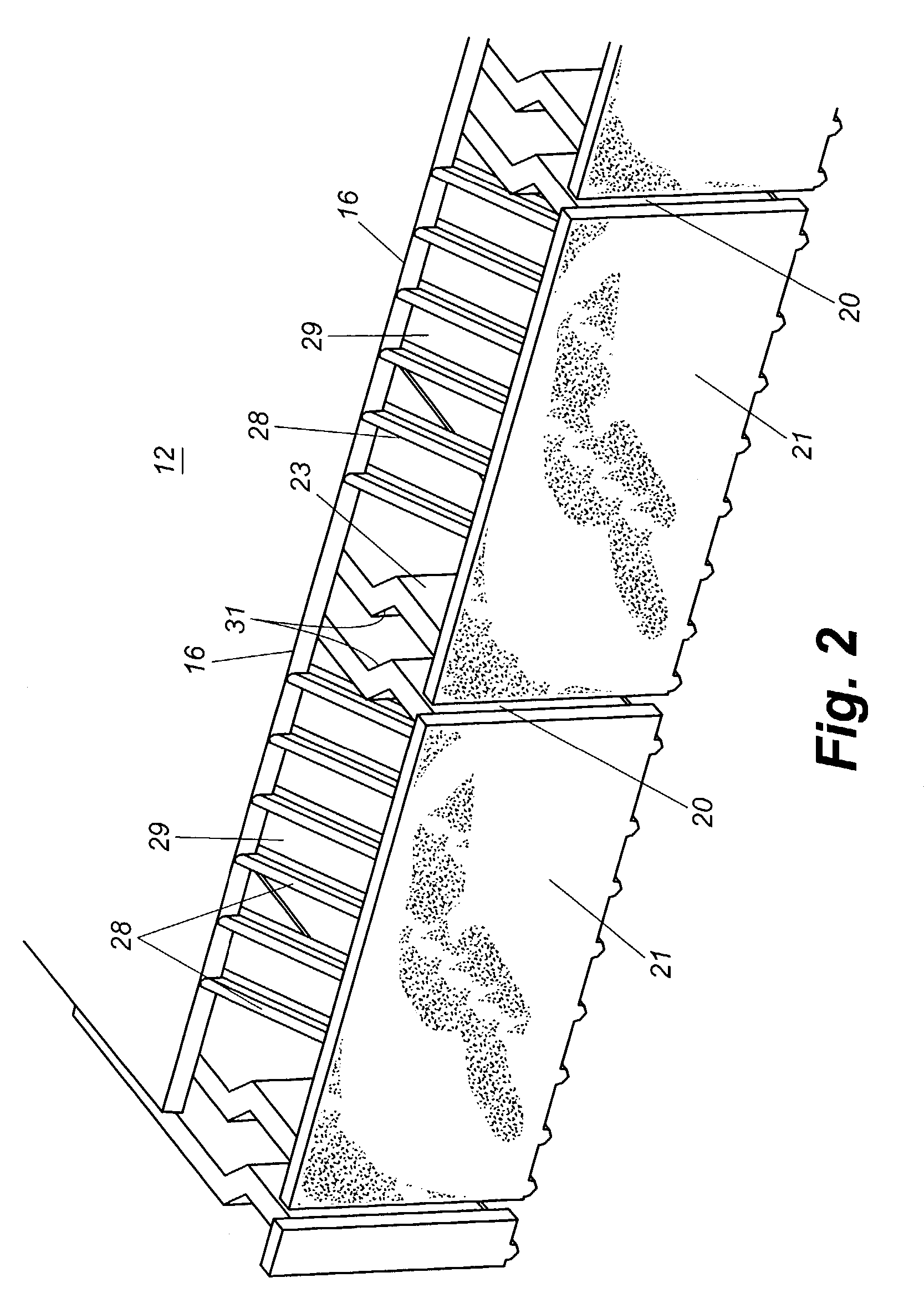Manually separable ridge vent
a ridge vent and man-made technology, applied in the field of attic ventilation, can solve the problems of exceedingly inefficient attic ventilation, difficult installation and time-consuming, and are typically less sophisticated in design and configuration than panel-type ridge vents, and achieves superior ventilation and air flow. superior, easy-to-install
- Summary
- Abstract
- Description
- Claims
- Application Information
AI Technical Summary
Benefits of technology
Problems solved by technology
Method used
Image
Examples
Embodiment Construction
[0026]Referring now in more detail to the drawings, in which like reference numerals refer to like parts throughout the several views, FIG. 1 illustrates a relatively short section of a rollable baffled ridge vent that embodies principles of the present invention in a preferred form. It will be understood that a complete ridge vent is much longer than the short section illustrated in FIG. 1 for unrolling from a rolled-up configuration along the ridge of a roof. A short section is illustrated in the drawings for simplicity and clarity of description. The ridge vent 11, which is made of molded plastic, is formed with a top panel 12 having a laterally flexible central portion 13 and edges 14 and 16. Wind baffles 17 and 18 extend along and outboard of respective edges 14 and 16. Wind baffle 17 is defined by a plurality of aligned coextensive substantially rectangular baffle sections 19 that together form a wind baffle that presents a generally flat or smooth face to a lateral wind blowi...
PUM
 Login to View More
Login to View More Abstract
Description
Claims
Application Information
 Login to View More
Login to View More - R&D
- Intellectual Property
- Life Sciences
- Materials
- Tech Scout
- Unparalleled Data Quality
- Higher Quality Content
- 60% Fewer Hallucinations
Browse by: Latest US Patents, China's latest patents, Technical Efficacy Thesaurus, Application Domain, Technology Topic, Popular Technical Reports.
© 2025 PatSnap. All rights reserved.Legal|Privacy policy|Modern Slavery Act Transparency Statement|Sitemap|About US| Contact US: help@patsnap.com



